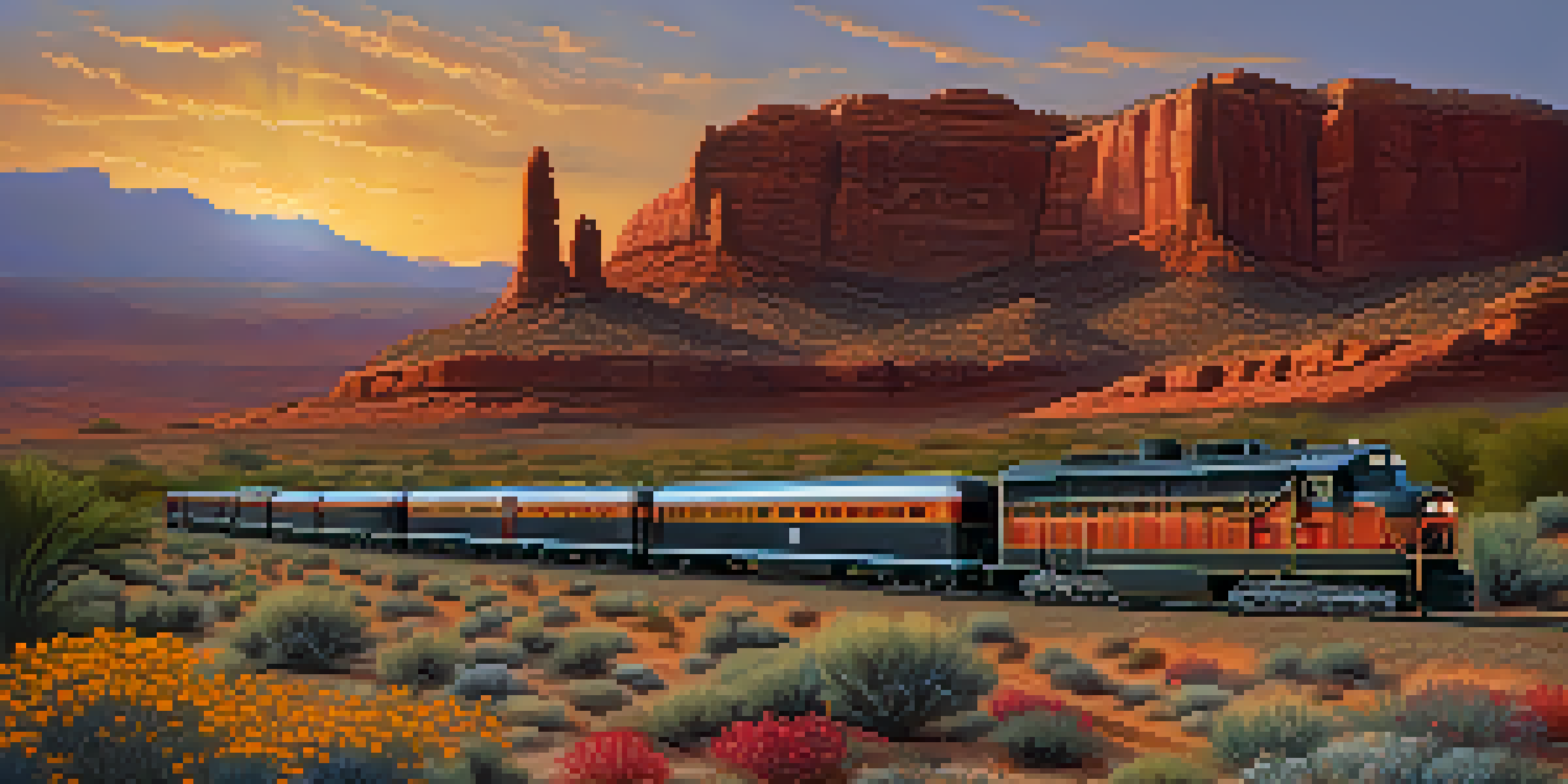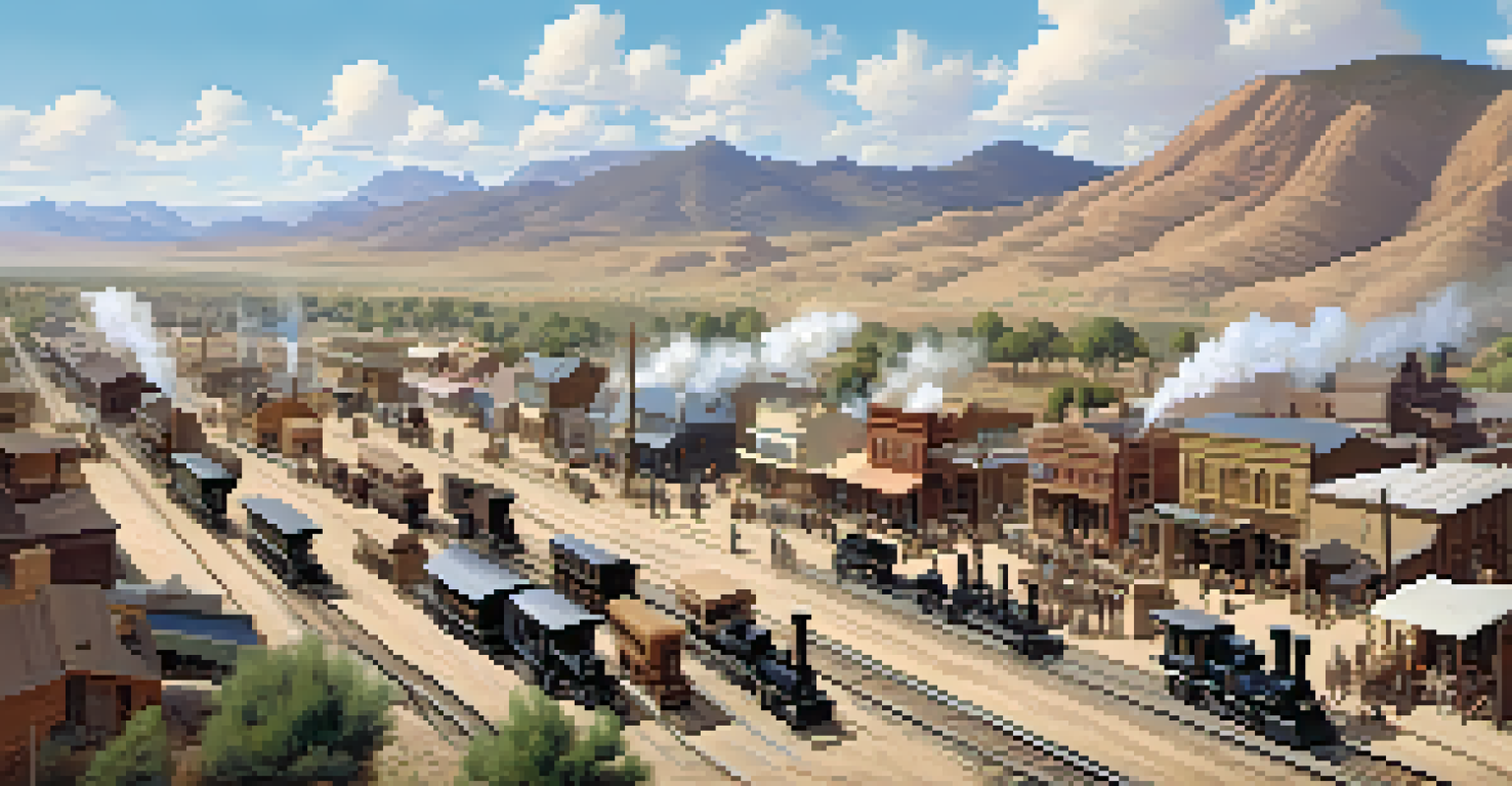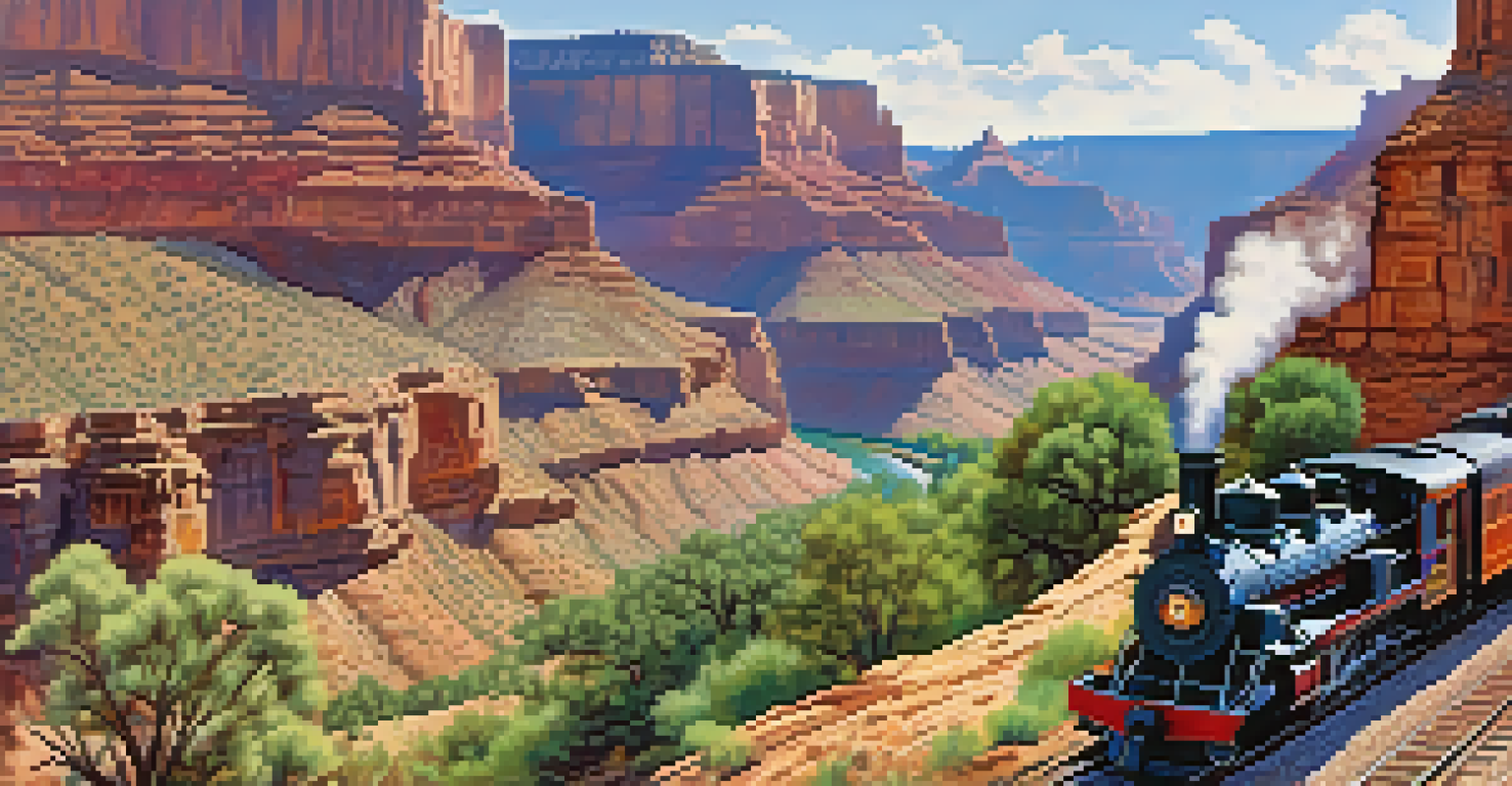The Transformation of Arizona's Landscapes by Railroads

The Birth of Railroads in Arizona: A New Era Begins
In the late 19th century, the arrival of railroads marked a monumental shift for Arizona. These iron pathways connected remote areas to bustling markets, transforming the way goods and people moved across the state. The Southern Pacific Railroad, for instance, completed its route through Arizona in 1880, paving the way for economic growth and development. With trains now linking urban centers to rural landscapes, local communities began to thrive.
The railroads are the arteries of commerce, the channels of trade, and the means of communication that unite the states and the people.
Railroads not only facilitated trade but also encouraged settlement in previously isolated regions. As towns sprouted along the tracks, the once-arid desert began to bloom with new opportunities. Families and businesses flocked to these emerging communities, drawn by the promise of jobs and prosperity. This influx of people and resources fundamentally altered the landscape, setting the stage for modern Arizona.
Moreover, the construction of railroads significantly impacted the environment. While they enabled economic advancement, they also led to changes in land use, as vast tracts of land were cleared for tracks and stations. This duality of progress and consequence illustrates how railroads were instrumental in shaping Arizona's physical and cultural landscapes.
Railroads and the Development of Arizona's Infrastructure
As railroads expanded, they brought about essential infrastructure improvements across Arizona. The need for stations, depots, and maintenance facilities led to the development of roads, bridges, and other transportation networks. This interconnectedness laid the groundwork for further economic diversification and urbanization, as towns began to develop around these critical transport hubs.

The presence of railroads also accelerated the growth of industries within the state. Agriculture, mining, and tourism blossomed thanks to the efficient transport of goods and resources. For instance, the flourishing copper industry in Bisbee became a significant economic driver, largely due to its accessibility via railroads. Consequently, this industrial boom transformed Arizona's economic landscape.
Railroads Transformed Arizona's Economy
The arrival of railroads in the late 19th century sparked economic growth and development by connecting remote areas to markets.
However, this rapid development wasn't without challenges. The increased movement of people and goods also led to environmental degradation, as natural habitats were disrupted. Balancing growth with preservation became a constant struggle, highlighting the complex relationship between progress and its impact on Arizona's diverse landscapes.
Cultural Exchanges: Railroads as Connectors of Communities
Beyond economic changes, railroads served as conduits for cultural exchange in Arizona. They facilitated the mingling of diverse populations, allowing different communities to share their customs, traditions, and ideas. This cultural melting pot enriched the social fabric of Arizona, making it a vibrant place to live and work.
Transportation is the center of our economic system. It is the lifeblood of our economy and the key to our growth.
Cities such as Tucson and Phoenix became cultural epicenters, drawing influences from various groups, including Native American, Mexican, and Anglo communities. Festivals, art, and cuisine flourished as people from different backgrounds collaborated and interacted. The railroads played a pivotal role in this blending, creating a unique cultural identity that continues to thrive today.
However, this exchange also came with difficulties. The displacement of Native American tribes and the loss of traditional lands were consequences of railroad expansion. Understanding this complex history is essential in appreciating the full impact of railroads on Arizona's cultural landscapes.
Natural Landscapes Altered: Railroads and Environment
Arizona's breathtaking natural landscapes underwent significant changes with the establishment of railroads. The construction of tracks often required extensive land clearing, which disrupted ecosystems and altered natural habitats. As trains carved through mountains and valleys, they left an indelible mark on the environment.
In addition to physical alterations, the railroads influenced water resources in the region. The increased demand for irrigation to support agriculture led to the diversion of rivers and streams, further reshaping the landscape. Consequently, the balance of Arizona's ecosystems was altered, with long-lasting effects on wildlife and plant species.
Cultural Exchange Through Railroads
Railroads facilitated cultural mingling among diverse communities, enriching Arizona's social fabric and creating a unique cultural identity.
Despite these challenges, railroads also contributed to conservation efforts. As awareness of environmental issues grew, railroads became advocates for preserving the natural beauty of Arizona. Scenic train routes, such as the Grand Canyon Railway, highlight the state's stunning landscapes while promoting eco-tourism and conservation initiatives.
Tourism and Railroads: A Journey Through Arizona's Wonders
Railroads not only transformed Arizona's economy but also revolutionized its tourism industry. The accessibility provided by trains opened up the state to visitors eager to explore its natural wonders. Iconic destinations like the Grand Canyon became more reachable, attracting travelers from across the country and the globe.
The allure of adventure became synonymous with train travel in Arizona. Many tourists enjoyed leisurely rides through striking landscapes, creating memories that would last a lifetime. Historic routes, like the Santa Fe Railroad, offered passengers breathtaking views of the desert, mountains, and canyons, showcasing the region's beauty in a way that few other means of transport could.
As tourism flourished, local economies benefited immensely. Small towns near popular attractions saw a boom in hospitality and service industries, providing jobs and opportunities for residents. The railroads' role in promoting Arizona as a travel destination is a testament to their lasting impact on the state's identity.
The Decline of Railroads: A Shift in Arizona's Landscape
As the 20th century progressed, the rise of automobiles and air travel began to overshadow railroads in Arizona. This shift marked a significant decline in train travel, leading to the abandonment of many rail lines and stations. Consequently, the once-bustling railroad towns experienced a downturn, altering their landscapes and economies.
The decline of railroads also influenced how people interacted with Arizona's landscapes. With highways and airports taking center stage, fewer travelers ventured into the state's remote areas by train. This shift led to a diminished appreciation for the scenic routes once traversed by steam engines, leaving behind a legacy that many still cherish.
Environmental Impact of Railroads
While railroads promoted economic advancement, they also led to significant environmental changes and challenges in Arizona's landscapes.
Despite this decline, some railroads have adapted to modern demands. Historic preservation efforts and tourist trains have emerged, allowing travelers to experience the magic of train travel while showcasing Arizona's stunning scenery. These initiatives highlight the enduring connection between railroads and the state’s landscapes, even in changing times.
Legacy of Railroads: A Lasting Influence on Arizona
The legacy of railroads in Arizona is multifaceted, encompassing economic, cultural, and environmental dimensions. While they facilitated growth and development, they also prompted challenges that continue to resonate today. Understanding this legacy is crucial for appreciating the state's rich history and diverse landscapes.
Railroads have left an indelible mark on Arizona's identity, shaping everything from its economy to its cultural tapestry. The stories of communities that thrived along the tracks serve as a reminder of the resilience and adaptability of the people who call this state home. This history enriches the narrative of Arizona, intertwining human experience with the natural world.

As we look to the future, the lessons learned from the transformation brought about by railroads can guide sustainable practices in Arizona. Balancing growth with environmental stewardship remains a crucial goal, ensuring that the beauty of Arizona's landscapes endures for generations to come.